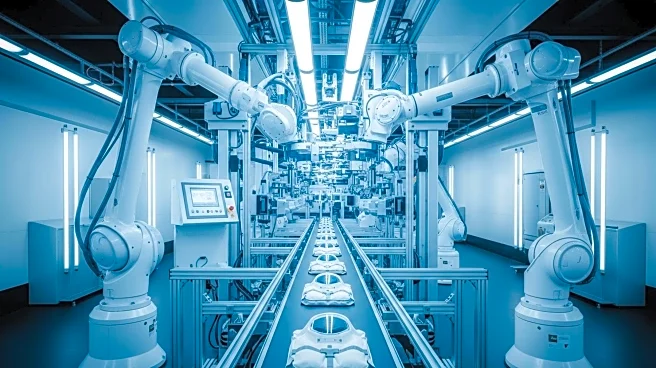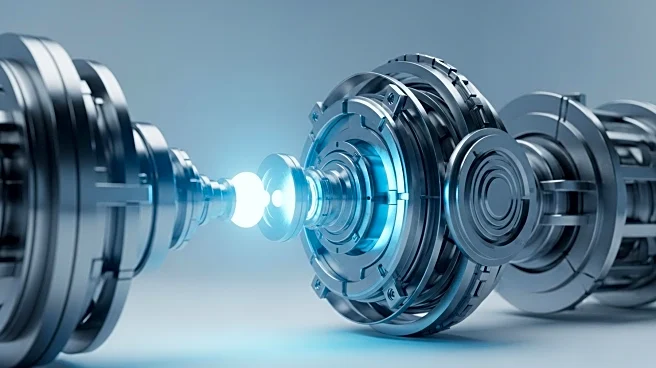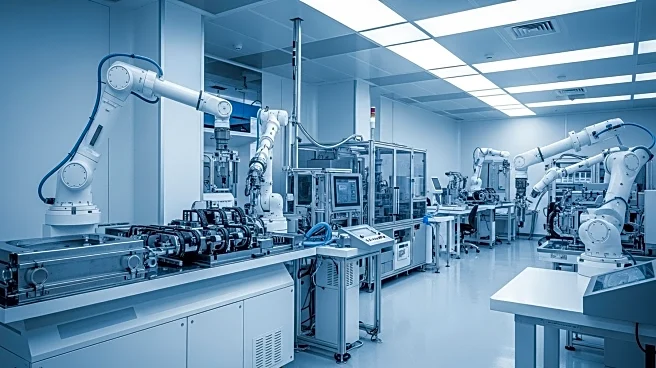What's Happening?
Wauseon Machine, a provider of integrated automation solutions, has developed a new process for producing sewn-style hairnets using thermoplastic welding. This innovation comes in response to the vulnerabilities exposed in global supply chains during the COVID-19 pandemic, particularly in the healthcare sector. Hospitals and healthcare providers faced shortages of essential items like masks, gloves, gowns, and hairnets, prompting a shift towards domestic production. Wauseon Machine's approach involves heating and fusing spunbond fibers to form a hem without stitching, allowing for full automation of hairnet production. The process includes inserting elastic into the hem to achieve the fit and function of traditional sewn hairnets. This development required overcoming engineering challenges such as static buildup and material variability, which were addressed by creating an environmentally controlled cleanroom and adapting the equipment for quick changeovers between different hairnet sizes.
Why It's Important?
The innovation by Wauseon Machine is significant as it addresses critical supply chain vulnerabilities in the healthcare sector by enabling domestic production of PPE. By automating the production of hairnets, the company reduces reliance on overseas manufacturing, which can be disrupted by global events like pandemics. This move not only enhances the resilience of healthcare supply chains but also sets a precedent for other sectors, such as defense and aerospace, to reshore production of critical components. The ability to produce PPE domestically ensures that healthcare providers can maintain operations without interruption, safeguarding public health and safety. Additionally, the project demonstrates the potential for process innovation to solve complex manufacturing challenges, paving the way for more efficient and scalable production methods in the future.
What's Next?
The successful implementation of Wauseon Machine's thermoplastic welding process for hairnet production may inspire similar innovations in other PPE manufacturing areas. As sectors like healthcare, defense, and aerospace continue to explore reshoring production, this project could serve as a model for developing new processes that balance speed, scale, and quality. Stakeholders in these industries may look to replicate Wauseon's approach to address their own supply chain challenges. Furthermore, the project's success could lead to increased investment in domestic manufacturing capabilities, fostering economic growth and job creation in the U.S. manufacturing sector.
Beyond the Headlines
The development of thermoplastic welding for hairnet production highlights the broader implications of process innovation in manufacturing. By co-developing processes and equipment, companies can achieve greater precision and adaptability, allowing them to respond quickly to changes in material properties or market demands. This approach not only enhances manufacturing resilience but also encourages collaboration between engineering teams and clients, fostering transparency and reducing project risks. As industries increasingly prioritize domestic production, the lessons learned from Wauseon's project could influence future manufacturing strategies, emphasizing the importance of innovation and adaptability in maintaining competitive advantage.











